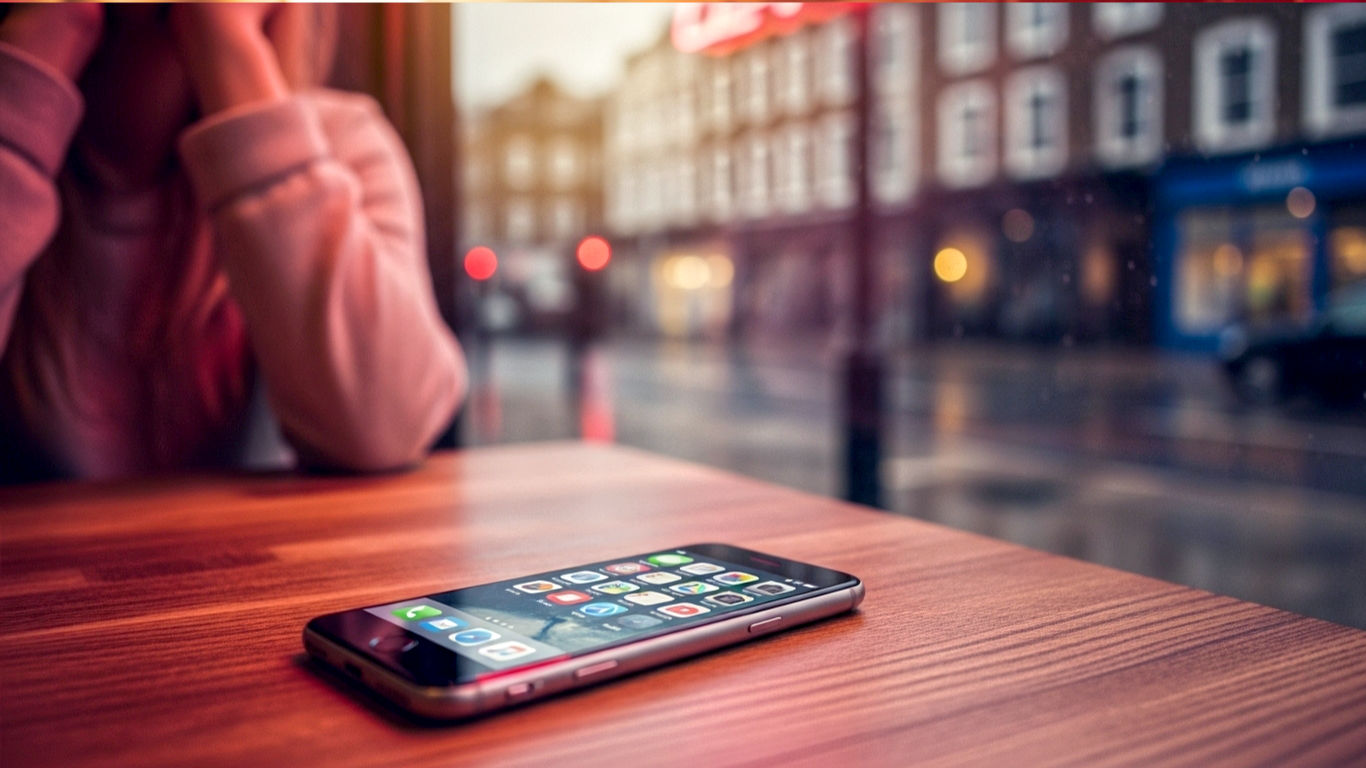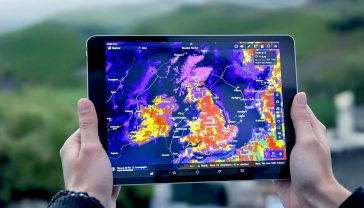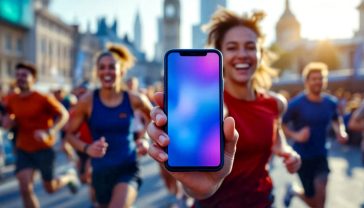The 10 Best iPhone Apps Ever: Our Expert Picks
Which iPhone apps truly changed the world? We dive into the definitive list of the 10 best apps that transformed how we live, work, and play in Britain.

This post may contain affiliate links. If you make a purchase through these links, we may earn a commission at no additional cost to you.
Back in 2008, something incredible happened. Apple opened the App Store, a digital shopfront that turned the iPhone from a cool gadget into a pocket-sized powerhouse. Suddenly, our phones weren’t just for calls and texts; they could be anything—a camera, a games console, a sat-nav, or even a musical instrument. It was a proper game-changer.
Since then, millions of apps have popped up, all fighting for a spot on our home screens. Most are forgotten in a week, but a special few have stuck around. They’ve changed how we chat with mates, get from A to B, listen to music, and even how we see the world. They’re not just clever bits of code; they’ve become part of our daily lives.
So, which ones are the true legends? The ones that really made a difference? We’ve looked back over the years, sifting through the fads and the flops to pick out the ten best iPhone apps of all time. These are the apps that didn’t just do something well—they did it so brilliantly that we can’t imagine our lives without them. Let’s dive in.
1. Google Maps: The Ultimate Digital Navigator
Before Google Maps, getting lost was a genuine, everyday risk. You’d have a massive A-Z map flapping in the wind, a dodgy sat-nav screeching “Recalculating!”, or you’d have to swallow your pride and ask a stranger for directions. Then, in 2007, Google Maps arrived on the scene and changed everything. It put a map of the entire world in your pocket. For free.
Why It’s a Game-Changer
At first, it was just about seeing where you were. That little blue dot, pulsing away, was like magic. But Google didn’t stop there. They kept adding layers of genius.
First came Street View. Suddenly, you could drop a little peg-man anywhere and see what a place actually looked like. Wondering if that hotel in Cornwall is on a grim main road or a lovely seaside lane? Street View could show you. It felt like a superpower. It was also brilliant for a bit of harmless snooping on your old house or spotting your neighbour’s questionable garden gnome collection.
Then came the turn-by-turn navigation. This was the real killer blow for those expensive sat-navs from TomTom and Garmin. Your iPhone could now guide you, turn by turn, whether you were driving up the M1 or trying to find a specific pub in the backstreets of Brighton. It told you about traffic jams in real-time, suggesting quicker routes to get you to your Sunday roast on time.
But the real magic of Google Maps is how it understands what you need. It’s not just for drivers. It’s for everyone.
More Than Just a Map
Think about what it does now. You can tap a button and see every bus, train, and Tube coming your way, with live times. Planning a trip across London? It’ll show you the quickest route on the Underground, tell you which platform to stand on, and even let you know if the Central line is having another one of its meltdowns.
It’s also become our local guide. Looking for the “best fish and chips near me”? It’ll show you a list, complete with reviews from other people, photos of the food, and opening times. It finds cashpoints, post offices, and parks. It’s the answer to almost every question you have when you step out of your front door.
Google Maps didn’t just replace the A-Z; it made exploring effortless. It took the fear out of being lost and gave us the confidence to discover new places, whether it’s a hidden café in Manchester’s Northern Quarter or a walking trail in the Peak District. It’s not just an app; it’s an essential life tool.
2. Spotify: All the World’s Music in Your Pocket
Remember the old days of music? You’d spend your pocket money on a CD that had one or two good songs and ten duds. Or you’d spend hours on dodgy sites like Limewire, downloading low-quality MP3s and hoping you weren’t also downloading a computer virus. It was a faff.
Then, in 2008, a Swedish company called Spotify came along with a simple, mind-blowing idea: what if you could listen to almost any song ever recorded, instantly, for a monthly fee that costs less than a single album? It sounded too good to be true. But it wasn’t.
How It Reinvented Music
Spotify completely changed our relationship with music. The idea of “owning” music started to feel old-fashioned. Why fill your phone with hundreds of files when you could have millions of songs ready to stream from the cloud?
The app’s killer feature was its enormous library. Suddenly, you had access to everything from The Beatles to the latest grime artist. You could revisit the cringe-worthy pop hits of your teenage years, discover a whole new genre you’d never heard of, or finally listen to that classic album your dad’s been banging on about for years.
But Spotify’s genius wasn’t just the size of its library; it was how it helped you navigate it. This is where playlists and discovery came in.
Your Personal DJ
Spotify is brilliant at guessing what you want to hear next. Its clever algorithms watch what you listen to and create playlists just for you. The most famous of these is Discover Weekly, a personalised mixtape that lands every Monday. It’s scarily good at finding new tracks you’ll love, from artists you’ve never heard of. It’s like having a mate who has amazing music taste and knows you inside out.
It also popularised the idea of mood-based playlists. Need some upbeat tunes for a workout? There’s a playlist for that. Something chilled for a lazy Sunday morning? There are hundreds. People started making and sharing their own playlists for every occasion, from “BBQ Bangers” to “Sad Songs for Rainy Days.”
Spotify also brought podcasts into the mainstream, putting them in the same app as your music. It made it easier than ever to switch between your favourite tunes and a fascinating documentary or a hilarious comedy show on your commute.
For a monthly fee, Spotify gives us a key to a near-infinite library of sound. It has made music more accessible, more personal, and more fun than ever before.
3. WhatsApp: The App That Killed the SMS
For years, texting was simple but expensive. You’d get a measly 100 texts with your phone plan and would have to pay a fortune for every picture message. You’d shorten words to save characters (“c u l8r m8”) and live in fear of going over your limit.
Then, in 2009, WhatsApp arrived. It did one simple thing: it sent messages over the internet instead of the mobile network. This meant that as long as you had Wi-Fi or mobile data, you could send as many texts, photos, and videos as you wanted, to anyone in the world, for free. It was revolutionary.
Why It Took Over the World
At first, its main appeal was cost. It saved us a fortune, especially when texting friends who were on holiday abroad. But it quickly became about more than just free messages.
WhatsApp made messaging richer and more expressive. You could send high-quality photos without them arriving as a pixelated mess. You could send short voice notes, which were perfect for when you couldn’t be bothered to type. You could share your location with a single tap—a lifesaver when you’re trying to find your mates at a festival.
But the feature that truly cemented its place in our lives was the group chat.
The Heart of Modern Friendship
The WhatsApp group chat has become a cornerstone of modern life. There’s one for your family, where your mum posts blurry photos of the dog and your uncle shares questionable jokes. There’s one for your closest mates, which is a constant stream of memes, in-jokes, and plans for the weekend. There are groups for work projects, for your five-a-side football team, for the parents at your kid’s school.
These groups are where life is organised. They’re where stag dos are planned, where baby photos are shared, and where we check in on each other.
WhatsApp also introduced crucial features that we now take for granted. The little blue ticks that show your message has been read (causing delight and anxiety in equal measure). And, most importantly, end-to-end encryption. This meant that all your messages, photos, and calls were scrambled, so only you and the person you’re talking to could see them. Not even WhatsApp could read them. In a world increasingly worried about privacy, this was a massive deal.
WhatsApp didn’t just replace the SMS. It redefined what a messaging app could be: a private, versatile, and essential hub for all our relationships.
4. Instagram: The World’s Photo Album
Before Instagram, sharing photos online was a bit of a chore. You’d have to plug your camera into your computer, upload the photos to an album on Facebook, and then tag everyone. The photos themselves were often a bit flat and boring.
Instagram, launched in 2010, made the whole process instant, stylish, and fun. It was built for the smartphone camera. You’d snap a picture, choose a cool-looking filter to make it look arty and retro, write a short caption, and share it. It was that simple.
A Picture-Perfect World
The filters were the secret sauce at the beginning. They could make a picture of your drab lunch look like a gourmet meal. They made a cloudy day at the British seaside look like a vintage postcard. For the first time, anyone could take photos that looked good.
But Instagram quickly evolved from a simple photo-sharing app into a cultural phenomenon. It introduced a few key features that changed the game.
First came video, then Stories. The Stories feature, famously “borrowed” from Snapchat, was a stroke of genius. It let you share snippets of your day—photos and short videos—that disappeared after 24 hours. It was more casual and less polished than the main feed. You could share the silly, everyday moments without worrying about curating a perfect grid of photos. It was an instant hit.
Then came Reels, Instagram’s answer to TikTok. These short, snappy, music-backed videos became a huge new way to create and consume content.
More Than Just Pictures
Over the years, Instagram has become so much more than a photo album. It’s a place where we follow the lives of our friends, but also celebrities, artists, and chefs. It’s where trends are born, from fashion and food to fitness and travel.
It’s also become a massive marketplace. Small businesses, from local bakeries in Yorkshire to handmade jewellery makers in Bristol, can build a following and sell their products directly to customers. “Influencers” built entire careers on the platform, shaping what we buy, where we eat, and where we go on holiday.
Of course, it has its downsides. The pressure to present a perfect, filtered life can be damaging, and the endless scrolling can be addictive. But there’s no denying its impact. Instagram changed the way we see and share our world. It turned everyday moments into art and gave everyone a platform to tell their own visual story.
5. Uber: The Taxi Reimagined
Hailing a cab used to be a gamble. You’d stand on a street corner, arm outstretched, hoping a black cab would show up. You’d have no idea how much the journey would cost, and you’d have to hope you had enough cash in your wallet to pay for it.
Uber, which launched in the UK in 2012, completely transformed the experience. It used your phone’s GPS to connect you with a nearby driver in minutes.
How It Made Taxis Simple
The brilliance of Uber was in its simplicity. You’d open the app, type in your destination, and it would tell you exactly how much the trip would cost upfront. No more watching the meter tick up with a sense of dread.
You could see on a map exactly where your driver was and how long they’d take to arrive. It gave you the driver’s name, their photo, and their car registration, which made it feel much safer than jumping into a random minicab.
Payment was seamless. You’d link your card to the app, and when the ride was over, you’d just hop out. No fumbling for change. Afterwards, you could rate your driver, and they could rate you, which helped to keep everyone on their best behaviour.
A Disruptive Force
Uber wasn’t just a convenient app; it was a massively disruptive force. It challenged the traditional taxi industry, leading to protests from black cab drivers in London and debates in cities across the UK. It also raised important questions about the “gig economy” and the rights of its drivers.
But for customers, the benefits were undeniable. It made getting a ride cheaper, easier, and more reliable, especially in areas that weren’t well-served by traditional taxis.
It also expanded beyond just cars. Uber Eats used the same model to deliver food from your favourite local restaurants right to your door. Suddenly, a Friday night takeaway wasn’t limited to the places that had their own delivery drivers.
Uber fundamentally changed our expectations of urban transport. It showed us that with a clever app, you could summon a car, a bike, or a curry with the tap of a button. It brought a level of on-demand convenience to our lives that we quickly took for granted.
6. Citymapper: The Ultimate Public Transport App
If you live in a big city like London, Manchester, or Glasgow, getting around can be a stressful business. You’re trying to figure out the best way to get from the office to a restaurant, juggling buses, trains, and the Tube. Is it quicker to get the Overground or two buses? Is the Northern line delayed again?
Citymapper is the app that solves this puzzle. It’s like a super-smart transport geek in your pocket, and it’s specifically designed for people who rely on public transport.
Why It Beats the Competition
While Google Maps is great, Citymapper is in a different league for city dwellers. It doesn’t just show you the routes; it obsesses over the details that make a real difference to your journey.
Its main power is in comparing all your options. It will show you every possible way to get to your destination: walking, cycling (including bike-sharing schemes like London’s Santander Cycles), buses, trams, trains, the Tube, and even ferries or Uber. It lays them all out, telling you exactly how long each will take and how much it will cost.
But it’s the little details that make it so brilliant.
The Small Details That Matter
Citymapper thinks about your journey from start to finish. If you’re taking the Tube, it will tell you which carriage to get on so that you’re right by the exit at your destination station. That’s a pro-level move that can save you precious minutes.
It gives you real-time disruption alerts that are often faster and clearer than the official apps. It will tell you if your bus is on a diversion or if your train is cancelled, and it will instantly suggest alternative routes.
It even has a sense of humour. Its journey planner includes a “catapult” option (sadly, not yet a reality) and it measures journey costs in terms of pints of beer. It makes a mundane daily commute feel a little more human.
The app’s interface is clean, colourful, and incredibly easy to understand. For anyone navigating the beautiful chaos of a British city, Citymapper isn’t just helpful—it’s indispensable. It takes the stress out of public transport and gives you the power to conquer the city with confidence.
7. Headspace: A Gym Membership for the Mind
For a long time, meditation was seen as something for hippies and monks. It seemed a bit weird and complicated. Headspace, co-founded by a Brit named Andy Puddicombe, changed all that. It took the ancient practice of mindfulness and meditation and repackaged it for the modern, busy, stressed-out world.
Making Mindfulness Simple
The app’s genius was to make meditation accessible. It didn’t ask you to sit cross-legged for hours. It started with a simple promise: learn the basics in just ten minutes a day for ten days.
Andy’s voice is the heart of the app. He’s got a calm, reassuring, and down-to-earth tone that makes you feel instantly at ease. He guides you through the sessions with simple instructions and charming animations that explain the concepts. He doesn’t use confusing jargon; he just helps you focus on your breath and notice what’s happening in your mind.
More Than Just Meditation
Headspace started with guided meditations for things like stress and anxiety, but it has grown into a complete toolkit for mental wellbeing.
It now has sessions designed to help you sleep better, with “Sleepcasts” that are like bedtime stories for grown-ups. It has short “mini-meditations” for when you’re feeling overwhelmed at work. It has guided walks and mindful cardio sessions to help you connect your mind and body. There are even meditations for kids.
The app helped to start a massive cultural conversation about mental health. It made it okay to admit that you’re feeling stressed or anxious, and it gave people a practical tool to do something about it. It framed meditation not as a strange spiritual practice, but as a healthy exercise for your brain—like taking your mind to the gym.
In a world where we’re constantly bombarded with notifications and distractions, Headspace offers a quiet sanctuary. It’s an app that helps you to slow down, breathe, and find a little bit of calm in the chaos.
8. Monzo: The Bank That Lives on Your Phone
Traditional banking can be a pain. You get a paper statement once a month that’s already out of date. You have to phone a call centre to get anything done. And you have no real idea where your money is going day-to-day.
Monzo, a British “neobank” that launched in 2015, tore up the rulebook. It’s a bank that was built from the ground up to exist as an app on your smartphone. Its bright, “hot coral” coloured card became an instant status symbol.
Banking Made Easy
The Monzo app gives you a level of control and clarity over your money that was unheard of before.
The moment you spend money, you get an instant notification on your phone telling you how much you spent and where. This simple feature is revolutionary. It makes you so much more aware of your spending habits. That daily coffee, that cheeky takeaway—it all adds up, and Monzo shows you exactly where it’s going.
It automatically categorises your spending into groups like “Groceries,” “Transport,” and “Eating Out.” You can see at a glance if you’re spending too much on lunches and not enough on your savings. You can set monthly budgets for each category and the app will warn you if you’re close to going over.
Smart Features for Modern Life
Monzo is packed with clever features that solve modern money problems. The “Pots” feature lets you separate money from your main balance for specific savings goals, like a holiday or a new laptop. It’s like having digital piggy banks.
Going on holiday? You can use your Monzo card abroad without being hit by crazy fees, and the app will show you the exchange rate in real-time.
Splitting a bill with friends? The “Bill Splitting” feature lets you divide the cost and send a request to your mates in a few taps. No more awkward conversations about who owes what.
Monzo and other app-based banks like it have forced the big, old high-street banks to up their game. They’ve shown that banking can be simple, transparent, and even enjoyable. It’s a bank that truly works for the customer, all from the convenience of an app.
9. TikTok: The New King of Entertainment
At first, many people dismissed TikTok as an app for teenagers doing silly dances. They were wrong. Launched internationally in 2017, TikTok has become one of the most powerful and influential social media platforms in the world.
Its format is simple: a never-ending, vertical stream of short videos, usually set to music or a snippet of audio. But behind that simplicity is an algorithm that is terrifyingly good at figuring out what you want to watch.
The Magic of the “For You” Page
When you open TikTok, you land on the “For You” Page (FYP). This is a personalised feed of videos that the app thinks you’ll like. It learns from every single thing you do: every video you watch all the way through, every video you skip, every comment you leave, every account you follow.
The result is a feed that feels like it’s been made just for you. One minute you could be watching a comedian from Glasgow, the next a chef in London showing you a quick recipe, then a historian explaining a weird bit of British history. You don’t follow people in the same way you do on Instagram or Twitter; you just let the algorithm bring the content to you.
This has created a new kind of fame. A normal person—a plumber from Essex, a farmer from Wales—can post a video that goes “viral” and is seen by millions of people overnight.
Reshaping Culture
TikTok has had a massive impact on culture, especially music. A song can be completely unknown one day, and then if it gets used in a popular TikTok dance or trend, it can shoot to number one in the charts the next. It has revived old songs from decades ago, bringing them to a whole new generation.
It’s also changed how we learn. People are sharing “life hacks,” DIY tips, quick-fire history lessons, and science experiments in short, engaging videos. It’s a place of incredible creativity, where people share everything from comedy sketches to short films to beautiful animations.
The endless scroll can be incredibly addictive, and it’s easy to lose an hour just swiping through videos. But TikTok’s influence is undeniable. It has created a new, faster, and more chaotic form of entertainment that has captured the world’s attention.
10. NHS App: A Digital Front Door to Your Health
For decades, interacting with the NHS involved a lot of waiting. Waiting on the phone to book a GP appointment. Waiting in the surgery for your name to be called. Waiting for a letter to arrive in the post.
The NHS App, first launched in 2018, is slowly but surely changing that. It aims to be a single, secure place on your phone where you can manage your health.
Putting You in Control
The app’s purpose is to give patients more control and convenience. Its features are practical and genuinely useful.
You can use it to order repeat prescriptions. Instead of having to phone the surgery or drop off a paper slip, you can just tap a button in the app. You choose which pharmacy you want to pick it up from, and you get a notification when it’s ready. It’s a simple change, but it saves a huge amount of time and hassle.
You can use it to book and manage your GP appointments. You can see what slots are available and book one that works for you, without having to wait in a phone queue at 8am.
One of its most powerful features is the ability to view your health record. You can see a summary of your medical history, your test results, and details of your allergies and medications. This is incredibly empowering. It helps you to understand your own health better and have more informed conversations with your doctor.
A Growing Hub for Health
The NHS App became particularly important during the COVID-19 pandemic, when it was used to host the NHS COVID Pass, allowing people to prove their vaccination status. This showed the potential of having a single, trusted digital hub for health information.
The app is constantly evolving, with plans to add more features like video consultations and messaging services. It’s not perfect, and its functionality can vary depending on your local GP surgery, but it represents a huge step forward.
It’s a uniquely British app, representing a modern, digital version of the National Health Service we all rely on. It uses the power of technology to make healthcare simpler, faster, and more accessible for everyone.
Further Reading
For those interested in exploring more about app development, technology trends, and digital culture, these resources are a great place to start:
- TechCrunch: A leading voice in technology news and analysis.
- Wired UK: Offers in-depth features on technology and its impact on culture, science, and politics.
- The Verge: Covers the intersection of technology, science, art, and culture with sharp, insightful reporting.






